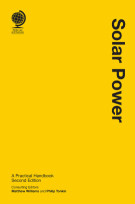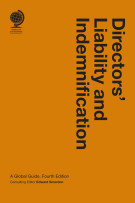
It has been a huge pleasure and a very informative process for me to review this recent publication from Globe Law & Business.
As IP professionals, we all feel we know many of the rules of the game in getting patent protection worldwide, but when it comes to enforcing these rights (or scarily, having rights enforced against you or your client), the whole process seems a lot more daunting. I speak from experience in a past life when I faced the wrath of a competitor in multiple jurisdictions under the same IP right (albeit a registered design, not a patent) and had to manage several simultaneous strands of “advice seeking” with local lawyers before I could even embark on the next steps of defending my company’s position. I would have been so grateful for a worthy tome such as this one to have helped me at those early stages.
Although at initial appearance this book is of compact size, it packs a very heavy and comprehensive punch in its 450 pages, with 22 chapters each covering a separate country/jurisdiction. There is an impressive global coverage of countries here. After two chapters of a broader, European, thrust (one on the UPC, and another written by the editor himself on the EPC), we have 13 European countries and seven others (US, China, India, Japan, Hong Kong, Australia, South Korea).
Each chapter follows a standard “template” of topics to discuss, which further adds to the usefulness of this book as a means not only to inform, but also to compare. Step by step, one is taken through the mechanics of patent litigation in each country. This starts with the legal support needed and the court system, followed closely by the procedures and typical timescales, allowing one immediately to be able to see the resource that will be needed to bring litigation, and the time it is likely to take. In many instances, extremely helpful diagrams and flow charts are included.
Then come sections on what can be (or has to be) done in the time leading up to the court proceedings. Pre-action evidence, disclosure, and interim relief (the ever-thorny issue of interim injunctions) are all discussed.
Next, we can read about whether discovery is permitted, and if so when and how, and very importantly, how evidence is presented in the courts, and here there is often extensive mention of the use of expert witnesses.
At this point the question of challenges to patent validity begins to emerge. In every chapter, we are told whether this can occur at the same time as litigation, or separately, and whether it is in a separate court or in fact referred back to the relevant patent office. All this is of huge significance to anyone wanting to know what the possible defences are to litigation, and how best to prepare them. Here we start to get into highly relevant and useful detail on the requirements of each country for patentability (the variations on inventive step and sufficiency being of especial interest), followed by what for me has been one of the most fascinating series of summaries to read, namely those directed at claim construction and doctrine of equivalents. In each case, this part is bang up-to-date, and refers to the most recent case law. As we still feel ourselves very much “in the wake” of Eli Lilly v Actavis, I commend everyone in the profession to read these sections if nothing else!
The chapters are all then rounded off with a section on “Hot Topics”, which is also, for me at least, a “must-read” part, and finally, a list of sources of information, nearly always Internet based. I should add at this point that each chapter also has very comprehensive footnotes throughout its content, so the cumulative “sources of information” becomes quite substantial.
In the few weeks that this book has been in my possession, I have derived much pleasure and a lot of extra knowledge simply by “dipping into” its pages. Not only that, I have looked at its content a little more holistically to see how useful it would have been to me at the time of my aforementioned debacle (answer – invaluable). I have also tried to judge how useful it would be if I was (on behalf of a client) either planning, or advising on the possibility, of litigation (answer again – invaluable). It is clearly not possible for a single volume of this size to give absolutely every detail and nuance of how IP/patent litigation is carried out in the countries considered, but it does enable one to be very much “in the driving seat” and to provide the kind of strategic advice clients often need and ask for.
Each chapter is very clearly and concisely written, always with a view to the basic message, but never at the expense of inaccurate generalisation. The authors’ credentials are set out at the back of the book, and they are all clearly experts in their field. Their knowledge and experience shine through in every chapter. On a more practical point, the typeface and general visual presentation is admirably clear, and the book itself is highly portable (yes, do read it on the train!).
Do I have any criticisms? Of the current content, no. I would have liked to have seen a few more non-EU countries discussed, but I know this list will never be complete for everyone. Nevertheless, I would exhort the editor to contemplate adding at least Canada, Brazil, Singapore, Malaysia and Russia to those already present in the book. Maybe this could be done (in a manner similar to the CIPA Guide) in the form of a supplement, which also gives the authors of the current chapters a chance to give a quick update on procedural changes or new case law?
To conclude, I really cannot say better than Sir Robin Jacob does in his foreword to the book, where he shrewdly draws the analogy between international IP litigation and attempting simultaneously to play chess, draughts, Go, Monopoly, and so forth. He says that a good book should give one a feel of the legal system concerned, along with the key elements of procedure and rules, such that it helps people decide where to take advice and to understand that advice. I heartily concur with Sir Robin that this book succeeds impressively, and unreservedly commend it to all patent professionals.
This was first featured in the February edition of the CIPA Journal: http://www.cipa.org.uk/
,





